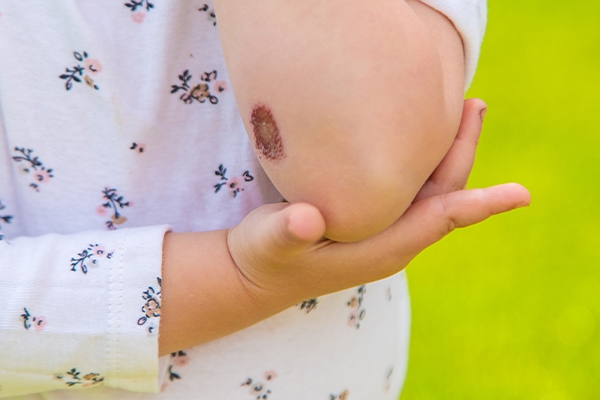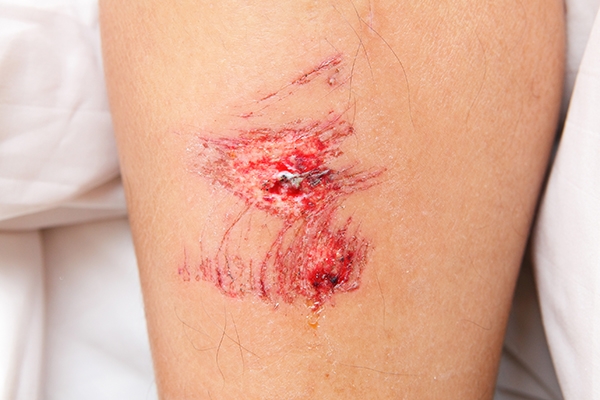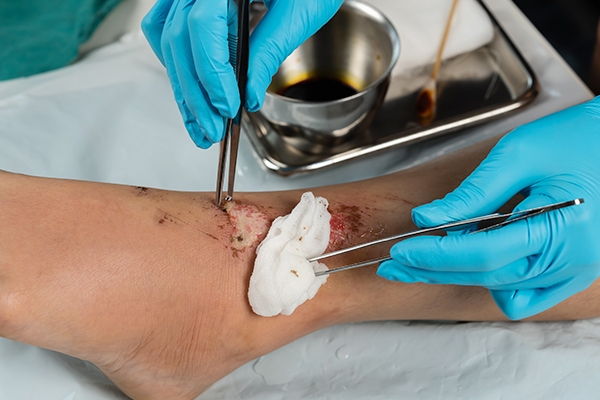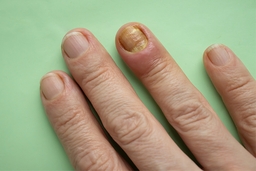Why Do Scabs Form on Wounds?

Have you ever noticed that when a wound starts to dry, it often develops a dark scab? Sometimes, the scab can even feel itchy.
Why do scabs form?

Scabs are the body’s natural defense against debris, infection, and blood loss. When the skin is injured and bleeding, blood clots begin to form. Over time, these clots harden into a protective crust known as a scab.
As damaged tissue regenerates underneath, the scab is gradually pushed out and replaced with new skin.
Scabs are usually reddish-brown at first, then darken as they age, sometimes turning almost black. A dark scab usually just means the healing process is advancing.
Scabs form on bleeding skin wounds, such as cuts, scrapes, punctures, burns, pressure sores, surgical incisions, or after a skin biopsy.
They can also appear when certain skin conditions break the skin, including acne, blisters, insect bites, chickenpox, eczema, folliculitis, impetigo, and psoriasis.
Interestingly, scabs are more likely to form when a wound is left dry. If the wound environment is kept moist, using ointments like petroleum jelly or an antibiotic cream, along with proper covering, a scab may not form at all.
Why do scabs itch?
Itching is a normal part of the healing process. When you get injured, the body releases chemicals such as histamine, which can trigger inflammation and itchiness. Dry skin around the wound can also worsen the itching sensation.
As tempting as it is, try not to scratch the scab. Scratching can slow healing and raise the risk of infection.
Signs of an infected scab

A little redness or swelling around the edges of a scab is normal, especially after stitches. But you should watch for these warning signs of infection:
- Redness or swelling that worsens after 48 hours
- Warmth, pain, or throbbing around the scab
- Pus draining from the wound
- Bleeding when touched
- Foul odor from the wound
- Red streaks spreading outward on the skin
- Scab not healing after 10 days
- Discoloration of the surrounding skin
- Yellow crust is forming around the area
- Pimples or bumps on the wound
- Abnormal tissue growth around the wound
- Swollen lymph nodes in the area
- Fever without another known cause
Infections happen when bacteria or microorganisms enter the wound. This may occur if:
- The wound isn’t properly cleaned, and debris remains inside
- You pick or scratch the scab, introducing new bacteria
- The wound isn’t covered or protected
- The wound stays overly moist, increasing fungal risk
The most common bacteria behind skin infections are Staphylococcus and Streptococcus. These bacteria normally live on the skin in small numbers but multiply quickly during infection.
How to treat a scab
Most minor wounds heal on their own within a few weeks, and the scab will eventually fall off naturally. To support healing, you can:
- Don’t pick at it. The scab will come off when its job is done.
- Keep it clean. Gently wash the area, but avoid touching it with unwashed hands.
- Moisturize the skin. Dryness can delay healing.
- Use a warm compress. This can boost circulation, maintain moisture, and soothe itching.
How to speed up scab healing
Wounds tend to heal faster when kept moist with ointments or petroleum jelly, rather than left completely dry. Moisture helps new skin cells grow and repair the wound.
Applying petroleum jelly and keeping the scab covered with a bandage can make the healing process faster compared to letting it dry out.
Regardless of whether it’s dry or moist, never force the scab off before it’s ready. A bandage also helps prevent accidental picking.
Keeping the wound clean and protected also reduces infection risk, which could otherwise slow healing.
Should you remove a scab?
No, you should never peel or pick off a scab. Doing so not only slows healing but can also tear away newly formed skin underneath. This may leave the wound red, oozing, and more likely to form another scab or even a scar.
Picking at scabs also removes the body’s natural barrier against germs, making you more vulnerable to infection.
In the long run, this increases the chance of permanent scarring.
Instead of scratching, you can ease scab-related itchiness with wund+™ Regeneration Cream (GWS Wellness), which hydrates dry skin and reduces irritation.
To help fade scars more quickly, wund+™ Scar Gel (GWS Wellness) can be applied. It contains Centella reversa stem cells to accelerate skin repair at the cellular level, and adaptive pigments to minimize scar visibility.



